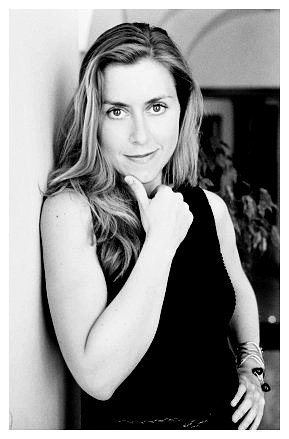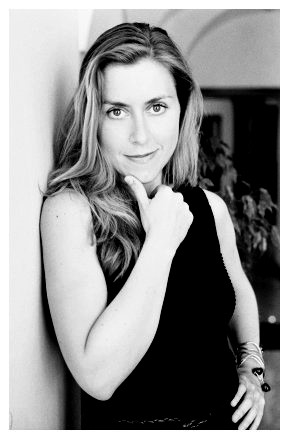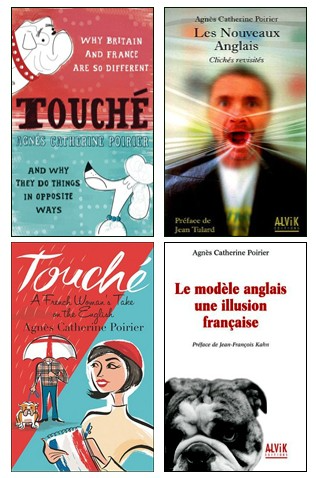Girl Talk with Agnès Catherine Poirier

Mon 10 Jan 2011

© Jerry Bauer
Of all the writers trying to decode Parisian women, few succeed with the insight of journalist Agnès Catherine Poirier. Brought up in Paris’s 12th Arrondissement, Poirier studied at the Sorbonne and Sciences-Po as well as at the London School of Economics. Her first book, Les Nouveaux Anglais, caused a sensation—one echoed by the publication, in English, of Touché, a book about how it feels to be a parisienne outside of France. The books earned Poirier her place as UK correspondent for Libération, Le Figaro, Le Nouvel Observateur and Le Monde and made her a prominent media spokesperson for French womankind. Working between London, Paris and Italy, she contributes to many newspapers, including the Guardian (where her blog has become one of the paper’s most popular). Poirier’s website features selections from her writing and broadcasting, along with information on how to order her books.
How did you begin to write professionally?
I wrote my first article at age 22 for Le Monde—after I called the switchboard and asked to talk to the editor. I pitched a story, he liked it and the day after that it was published.
Why are you based in London rather than Paris?
In May 1995, when Chirac was elected president, the romantic student in me claimed I had no choice but political exile. The problem is, he was reelected in 2007, and then came even worse: Nicolas Sarkozy. Am I condemned to life in exile? Even Victor Hugo came back!
How do you explain very different cultures to one another?
You can only understand home once you have left and stayed away long enough. After 14 years, I now know what makes me so French. It’s the reflection of your own image in strangers’ eyes that is the trigger for self-understanding. To explain one’s culture, humor, self-criticism and lightness are all important. But the most important thing is knowledge of what makes us different. For instance, historical facts—the central event of the French Revolution still explains 90 percent of French attitudes today.
When you return to Paris, what is most apparent to you?
I’m struck by the fact that the French don’t realize how happy they are and how easy they have it. Even though Sarkozy is trying to undo the fabric of France and will succeed, little by little, if he’s not stopped.
What are your most treasured Parisian activities and places?
Walking everywhere and cycling. Cafés such as Panis on the quai de Montebello, Le Petit Fer à Cheval on rue Vieille-du-Temple, Le Bûcheron on the rue de Rivoli at St. Paul, Chez Prosper at the Place de la Nation or l’Abribus on rue de Bagnolet. Visiting Père Lachaise. Reading on a reclining chair at the Luxembourg Gardens, or seeing an old film in Latin Quarter cinemas like l’Arlequin, the Action Cinemas or Le Champo. Bread from Kayser on rue Monge and chocolate from Patrick Roger on boulevard St.-Germain. A trip to the Louvre. Really, just flâner (to go for a stroll).
As a native of Paris, what do you value most about the city?
What I like about Paris is its immanence; things change and they don’t. You can still go to bistros Stefan Zweig visited during the 1890s, around places such as Palais Royal, the rue Dauphine or the rue du Pot de Fer in Mouffetard. The alliance of grandeur and the quotidian is at every corner. Adam Gopnik in Paris to the Moon has written beautiful and enlightening pages about it.
What is one thing in Paris that is underpublicized but should not be missed?
The Cimétière de Picpus, where Lafayette is buried. It hasn’t changed since the 1790s.
Much has been written about the fashion preferences of parisiennes versus those of other women. What do you think? Where do you shop?
La parisienne is less adventurous than the Londoner in the sense that she will adopt black rather than a patchwork of odd colors (which can prove sublime or ridiculous). But she knows what suits her; she creates her own style. Londoners and New Yorkers are much more prone to the diktats of women’s magazines. I buy my clothes vintage at the Paris flea markets: the marchés aux puces at Vanves, Montreuil and St.-Ouen. Also in Antwerp (designers’ prototypes) and Italy.

Do you have a favorite French dictum?
“Quand le vin est tiré, il faut le boire” (When the wine is drawn, it must be drunk).
What artists inspired you when you were young?
Off the top of my head, Victor Hugo, Jean Moulin, Françoise Sagan, Graham Greene and Orson Welles—and I have been in love with Gene Kelly since I was six years old.
When you travel so much for work, what tricks help you navigate the change between countries and cultures?
Everywhere I go, I re-create a routine, finding a café where I’ll go every morning, where people will recognize me year after year.
How does your Paris differ from your mother’s Paris? In what ways do you feel they are still the same?
My mother, a wonderful playwright and novelist, arrived in the mid-1950s. Paris was dark and dirty, a traffic inferno—but also an incredible intellectual hub. This has changed. Paris now is cleaner, more subdued and greener, too. We gain some, we lose some. I only wish Parisians would reclaim their revolutionary heritage and get rid of Sarkozy with their bare hands!